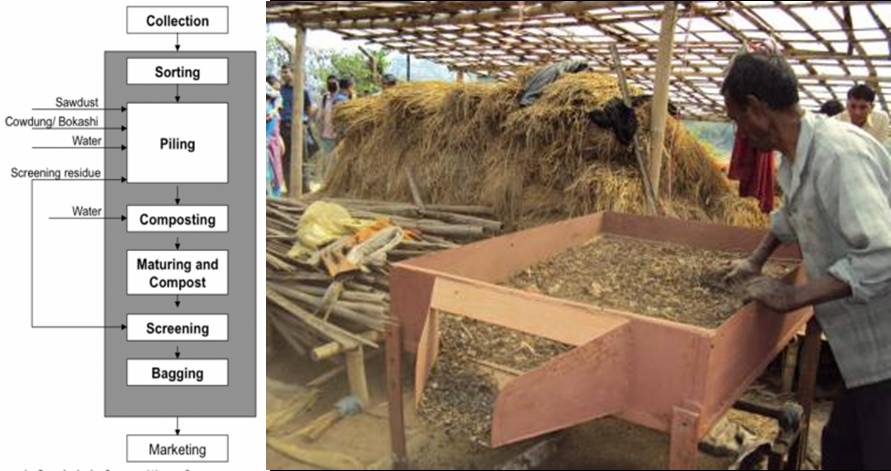Methods Of Composting Pdf
6 The preparation and use of compost 1 Reasons for composting Compost is an organic fertilizer that can be made on the farm at very low cost. The most important input is the farmer™s labour. Compost is decomposed organic matter, such as crop residues and/or animal ma-nure. Most of these ingredients can be easily found around the farm. On-farm composting methods LAND AND WATER DISCUSSION PAPER 2. Copies of FAO publications can be requested from: SALES AND MARKETING GROUP Information Division.
Composting Methods Introduction The secret to successful composting is to select an approach and technique that suits your needs and lifestyle. Your choice will depend on a number of factors such as how much space you have available, what materials you have, how you plan to use the compost, how much time you want to spend, and how neat you want your compost pile to look. For example, if you only need a little compost, want to expend minimal effort, and have a small area to do it in, your best choice might be a commercially available bin. Oranges Cracking On Orange Tree Load. If you have plenty of space and want large quantities of compost quickly, you may want to build a deluxe three bin unit. If you want to compost vegetative food waste separately, you may find it easiest to directly incorporate them into the soil. This lesson will cover four methods of composting: holding units, turning units, heaps and sheet composting. Other composting alternatives such as leaving grass clippings on the lawn, mulching, and vermi-composting (worm composting) are discussed later.

Holding Units Holding units are bins used to hold yard and kitchen materials until composting is complete. They need relatively little maintenance, and some models can be used by apartment dwellers for composting on balconies.
Nonwoody materials can be added to a holding unit as they are generated. (Many of the commercial one bin systems sold in stores and mail-order catalogs are holding units.) Using a holding unit is one of the easiest ways to compost but is generally slower. This type of enclosure makes it difficult to turn the heap as a way of increasing oxygen. No turning is required, but the lack of aeration causes the composting process to take from six months to two years. The process can be hastened by using portable bins.
Some lightweight units are designed to be taken apart and easily moved. These units can be removed from an existing heap and transferred to an adjacent location. The heap is then turned back over into the unit, mixing and aerating materials. Portable units can be purchased (usually plastic) or constructed from circles of wire fencing or hardware cloth, snow fencing, or wire framed in wood. Other folks attempt to improve aeration in holding units by adding one or more ventilating stacks or by poking holes into the pile. Ventilating stacks need to be placed into the center of the bin prior to making a pile. Stacks can be made out of perforated pipe, a cylinder of wire mesh or even a bunch of twigs loosely tied together.
PVC pipes should be at least one inch in diameter with holes drilled randomly along the length. They can be inserted vertically or horizontally. Another alternative to improve aeration is to place the holding unit on a wood pallet or plastic aeration mat (available from composting equipment dealers). In holding units, stages of decomposition will vary from the top to the bottom of the heap since yard trimmings and other organics are added continuously. Typically, the more finished compost will be found near the bottom of a pile.
Comments are closed.